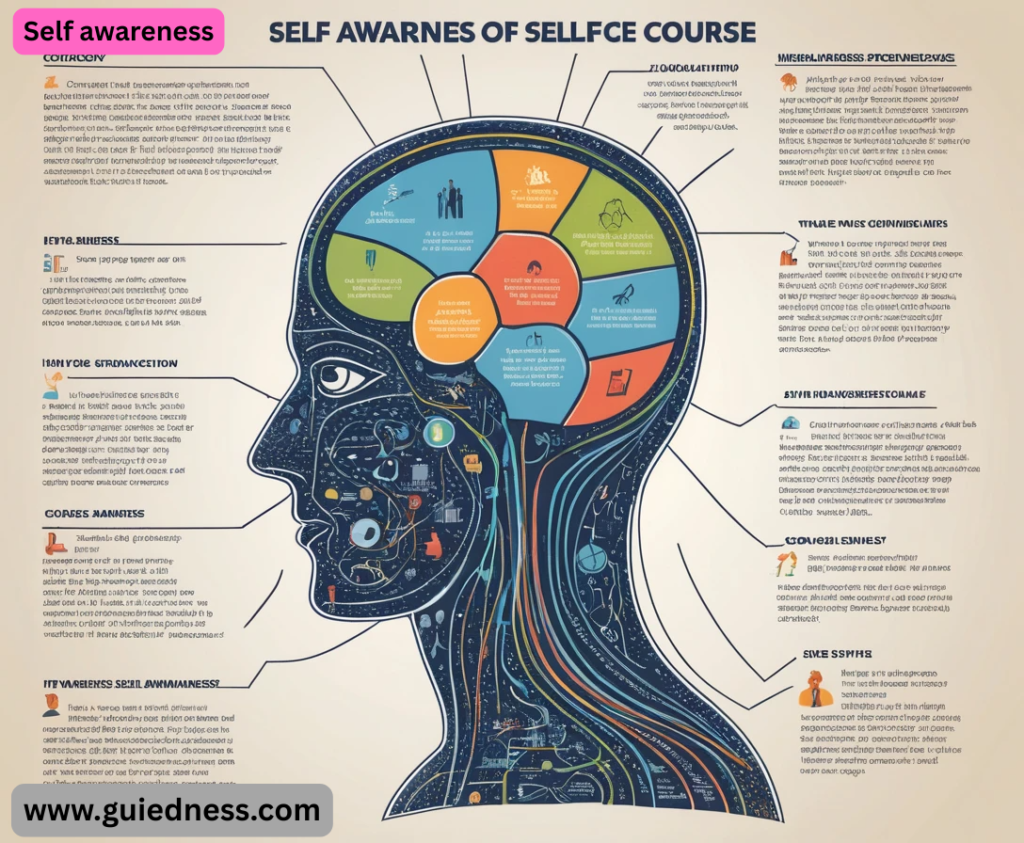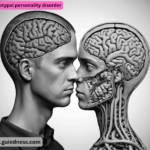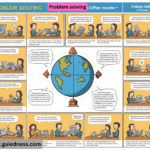Self awareness Of course. Self-awareness is a fascinating and complex topic, central to philosophy, psychology, and neuroscience. Here’s a comprehensive breakdown of what it is, its different types, why it matters, and how to cultivate it.
What is Self-Awareness?
- At its core, self-awareness is the conscious knowledge of one’s own character, feelings, motives, and desires. It’s the ability to take a step back and look at yourself almost as an external observer.
- The philosopher Daniel Dennett describes it as the human ability to not just have thoughts and feelings, but to know that we are having them. It’s the “light that turns on in the mind” allowing us to examine our own inner world.
The Two Types of Self-Awareness
- Psychologists often break self-awareness down into two distinct types:
Internal Self-Awareness (Private):
- What it is: How clearly we see our own inner world—our values, passions, aspirations, thoughts, feelings, strengths, and weaknesses.
- Example: Recognizing that you feel anxious not because of a work deadline, but because you have a deep-seated fear of being judged as incompetent. This type is associated with higher job and relationship satisfaction and personal well-being.
External Self-Awareness (Public):
- What it is: Understanding how other people see us. This involves being aware of our impact on others and how we show up in social situations.
- Example: Realizing that your habit of interrupting others, even when you’re excited, makes them feel unheard. This type is linked to greater empathy and stronger leadership skills.
- Crucially, being high in one type does not automatically mean you are high in the other. The goal is to be strong in both.
Why is Self-Awareness So Important?
- Self-awareness is the bedrock of emotional intelligence and personal growth. Its benefits are profound:
- Better Decision-Making: When you understand your values and biases, you can make choices that are truly aligned with who you are.
- Improved Relationships: It allows for greater empathy and understanding of how your actions affect others, leading to healthier communication and less conflict.
- Effective Leadership: Self-aware leaders are more empathetic, communicate better, and are open to feedback, which builds trust and inspires teams.
- Enhanced Emotional Regulation: By recognizing your emotional triggers, you can manage your reactions rather than being controlled by them.
- Personal Growth & Fulfillment: It allows you to identify your strengths to leverage and your weaknesses to improve, leading to a more authentic and satisfying life.
How to Cultivate Self-Awareness
- Self-awareness isn’t a fixed trait; it’s a skill that can be developed with practice.
Practice Mindfulness and Meditation:
- These practices train you to observe your thoughts and feelings without judgment, creating space between the stimulus (what happens) and your response.
Journaling:
- Writing down your thoughts, feelings, and reactions to events helps you identify patterns and underlying beliefs. Ask yourself “Why?
Seek Honest Feedback:
- Ask people you trust—friends, family, colleagues—for constructive feedback on how you come across. Be open and listen without getting defensive.
Take Personality and Psychometric Tests:
- Tools like the Enneagram, Myers-Briggs Type Indicator (MBTI), or StrengthsFinder can provide a structured language for understanding your tendencies. (Use them as a starting point for reflection, not as a final label).
Question Your Own Narratives:
- We all have stories we tell ourselves (“I’m bad at public speaking,” “I’m not a creative person”). Actively challenge these assumptions. Ask, “Is this objectively true, or just a belief I hold?”
Pay Attention to Your Triggers:
- When you have a strong emotional reaction (anger, defensiveness, hurt), see it as a signal. Ask yourself, “What is this really about? What old wound or fear is being touched?”
Practice Saying “I Don’t Know”:
- Acknowledging that you don’t have all the answers opens you up to new perspectives and reduces the ego’s need to be right.
Potential Pitfalls: The Dangers of Excessive Self-Awareness
- Self-consciousness is the hyper-focused, anxious version of self-awareness where you are overly concerned with how you are being perceived. This can lead to: Anxiety and rumination (overthinking).
Paralysis in decision-making.
- Inauthenticity as you try to mold yourself to others’ expectations.
- The key is to aim for a balanced, curious self-awareness, not a critical, obsessive one.
The Philosophical and Scientific Depths
1. The “Hard Problem” of Consciousness:
- At the most fundamental level, self-awareness is tied to the mystery of consciousness. Philosopher David Chalmers distinguishes between the “easy problems” (how the brain integrates information, focuses attention, etc.) and the “hard problem”: why and how physical processes in the brain give rise to subjective, first-person experience—the “what it is like” to be you. Self-awareness is a key feature of this subjective experience.
Levels of Self-Awareness:
- Psychologists have identified a spectrum, often observed in child development but applicable to adults:
- Level 1: Differentiation: The infant realizes that their reflection in a mirror is different from other people or objects.
- Level 2: Situation: The child recognizes that the reflection is themselves, not another child. This is famously tested with the “Mirror Test” (placing a mark on a child’s face without them knowing; if they touch their own face upon seeing the mark in the mirror, it indicates self-recognition).
Identification: The child fully knows, “That is me.”
- Level 4: Permanence: The child has a sense of self that continues over time, even when not looking in a mirror.
- Level 5: Self-Consciousness or “Meta-Self-Awareness”: The adult can not only recognize themselves but also think about their own thoughts, imagine how others are thinking about them, and conform (or not) to social standards.
Neurological Correlates:
- Brain imaging studies point to a specific network involved in self-referential thought, called the Default Mode Network (DMN). The DMN becomes active when we are not focused on the outside world—when we are daydreaming, recalling memories, thinking about the future, or reflecting on ourselves. Key areas include:
- Medial Prefrontal Cortex (mPFC): Involved in attributing thoughts to oneself and thinking about one’s own personality.
- Posterior Cingulate Cortex (PCC): Involved in autobiographical memory and self-relevance.
- Precuneus: Linked to visual-spatial imagery and episodic memory, key for mentally “seeing” yourself in past or future scenarios.
Advanced Concepts and Frameworks
1. The Johari Window:
- A powerful model for understanding self-awareness in relation to others, created by Joseph Luft and Harrington Ingham. It divides self-knowledge into four quadrants:
- The goal of increasing self-awareness is to expand the “Arena” by:
- Reducing the Blind Spot: Soliciting feedback from others.
- Reducing the Facade: Disclosing more about yourself to others.
- Exploring the Unknown: Through therapy, reflection, and new experiences.
The Iceberg Model (from Systems Thinking):
This is excellent for understanding the depth of our motives.
- Event Level (Above the water): What actually happened. (“I snapped at my colleague.”)
- Pattern Level (Just below): Recognizing a trend. (“I’ve been short-tempered all week.”)
- Structure Level (Deeper): Identifying the underlying systems. (“I’m overwhelmed because I haven’t delegated any tasks.”)
- Mental Model Level (Deepest): The beliefs, values, and assumptions driving the structure. (“My belief that ‘if you want something done right, you have to do it yourself’ is causing my stress and isolation.”) True self-awareness involves uncovering these deep-seated mental models.
The Three Selves (from Psychology):
- Self-Concept: Who you think you are. This is the story you tell yourself about yourself.
- Actual Self: Who you actually are in various moments, which may not always align with your self-concept.
- Ideal Self: Who you aspire to be. The gap between the Actual Self and the Ideal Self can be a powerful motivator for growth or a source of shame if not managed with self-compassion.
Common Barriers and “Enemies” of Self-Awareness
- Understanding what blocks self-awareness is as important as knowing how to build it.
Cognitive Biases:
- Confirmation Bias: We favor information that confirms our existing beliefs about ourselves.
- Introspection Illusion: We overestimate our own insight and underestimate the insight of others.
- Fundamental Attribution Error: We blame our own bad behavior on circumstances (“I yelled because I was stressed”), but blame others’ bad behavior on their character (“He yelled because he’s a jerk”).
The Cult of Self:
- In a well-meaning effort to build self-esteem, we can sometimes foster narcissism instead of true self-awareness. Narcissism is a hyper-focus on a grandiose, but fragile, self-image that must be constantly defended, leaving no room for honest self-assessment.
The “Inner Critic” vs. The “Observing Self”:
- Many people confuse harsh self-criticism with self-awareness. True self-awareness is neutral and curious (the Observing Self), while the Inner Critic is judgmental and punitive. The critic shuts down growth; the observer enables it.
Emotional Avoidance:
- We often avoid introspection because we are afraid of what we might find—shame, regret, or aspects of ourselves we dislike. It’s easier to stay busy and distracted.
Moving from Theory to Mastery: Advanced Practices
Identify Your Core Values and Narratives:
- Don’t just list values (e.g., “honesty”). Uncover the narratives behind them. (“Why is honesty so important to me? Because I was lied to as a child and felt powerless.”) This reveals the emotional engine of your values.
Shadow Work (A Jungian Concept):
- Actively explore your “Shadow Self”—the parts of your personality that you repress or deny because you find them unacceptable (e.g., anger, laziness, selfishness). Integrating your shadow, rather than fighting it, leads to profound wholeness and self-awareness. Ask: “What trait in others irritates me the most?” Often, that is a disowned part of your own shadow.
Define Your “Anti-Values”:
- List the values you actively reject. What behaviors or principles do you find most reprehensible? This often provides even clearer insight into your moral compass than your positive values do.
Practice “Second-Sight” in Conflict:
- In your next argument, make a conscious effort to observe the interaction from three perspectives: your own, the other person’s, and a “fly on the wall.” This builds both internal and external self-awareness simultaneously.





